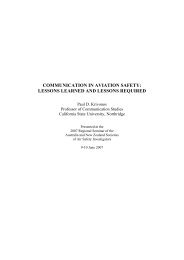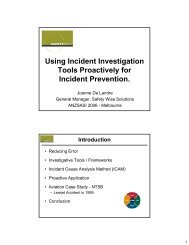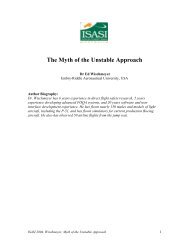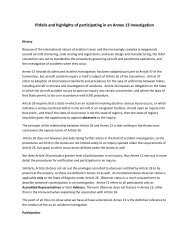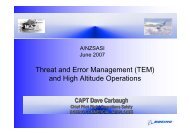Using Incident Investigation Tools Proactively for Incident ... - ASASI
Using Incident Investigation Tools Proactively for Incident ... - ASASI
Using Incident Investigation Tools Proactively for Incident ... - ASASI
Create successful ePaper yourself
Turn your PDF publications into a flip-book with our unique Google optimized e-Paper software.
_____________________________________________________________________<br />
3. To identify underlying or latent causes of the event.<br />
4. To review the adequacy of existing controls and procedures.<br />
5. To recommend corrective actions which when applied can:<br />
- reduce risk,<br />
- prevent recurrence;<br />
- and by default, improve operational efficiency.<br />
6. Detect developing trends that can be analysed to identify specific or recurring<br />
problems.<br />
7. To ensure that it is not the purpose of the investigation to apportion blame or liability.<br />
Where a criminal act or an act of willful negligence is discovered, the in<strong>for</strong>mation<br />
will be passed to the appropriate authority.<br />
8. To meet relevant statutory requirements <strong>for</strong> incident investigation and reporting.<br />
APPLYING ICAM<br />
ICAM is an analysis tool that sorts the findings of an investigation into a structured<br />
framework. An adaptation of the Reason Model with the ICAM terminology is shown at<br />
Figure 1 below:<br />
Figure 1.<br />
ICAM Model of Accident Causation<br />
The ICAM model organises occurrence causal factors into four elements which are briefly<br />
explained on the following page:<br />
___________________________________________________________________________________<br />
~ ANZSASI 2006 : De Landre, Gibb and Walters ~<br />
Page 3 of 12



